Poland's presidential election in charts

Poland's presidential election will head to a second-round run-off after centrist candidate Rafał Trzaskowski and conservative Karol Nawrocki emerged almost neck-and-neck in Sunday's first round, according to final results .
Trzaskowski, the deputy leader of Civic Platform (PO), Poland's main ruling party, led with 31.4% of the vote. He was closely followed by Nawrocki, supported by the opposition national-conservative Law and Justice (PiS) party, who secured 29.5%.
Voter turnout reached 67.31% – the highest for any first round of a presidential election in Poland's post-communist history.
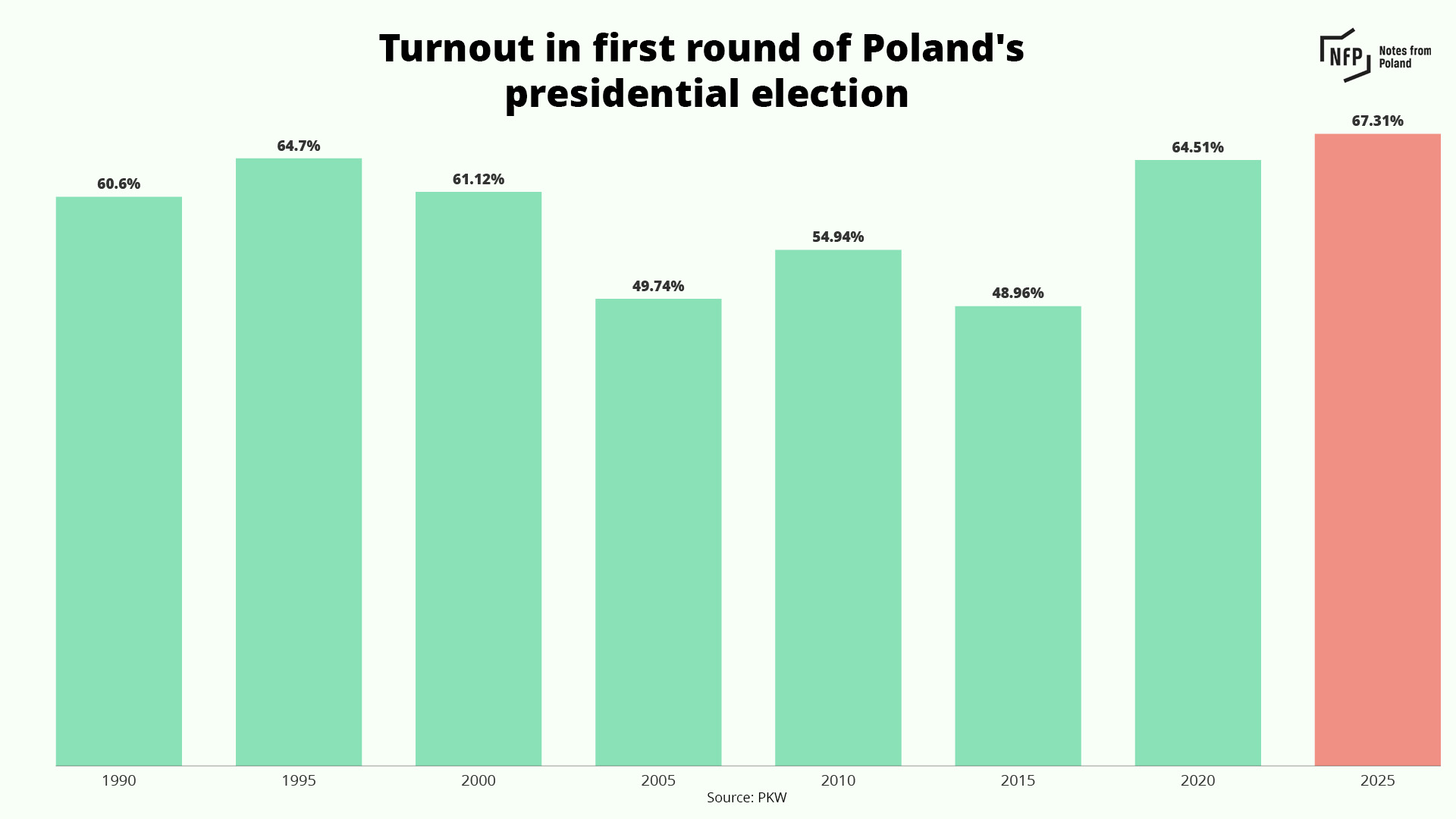
A detailed exit poll taken on election day pointed to a fragmented political landscape and shifting dynamics in the Polish electorate, particularly among younger voters, many of whom opted for outsider candidates at opposite ends of the political spectrum.
Among the youngest voters, turnout was the second highest of any age group, and the largest number of their votes went to Sławomir Mentzen of the far-right Confederation (Konfederacja) party and Adrian Zandberg of the small left-wing Together (Razem) party.
Older voters favored the candidates of the more traditional, established parties, PiS and PO, which have dominated Polish politics for the last two decades.
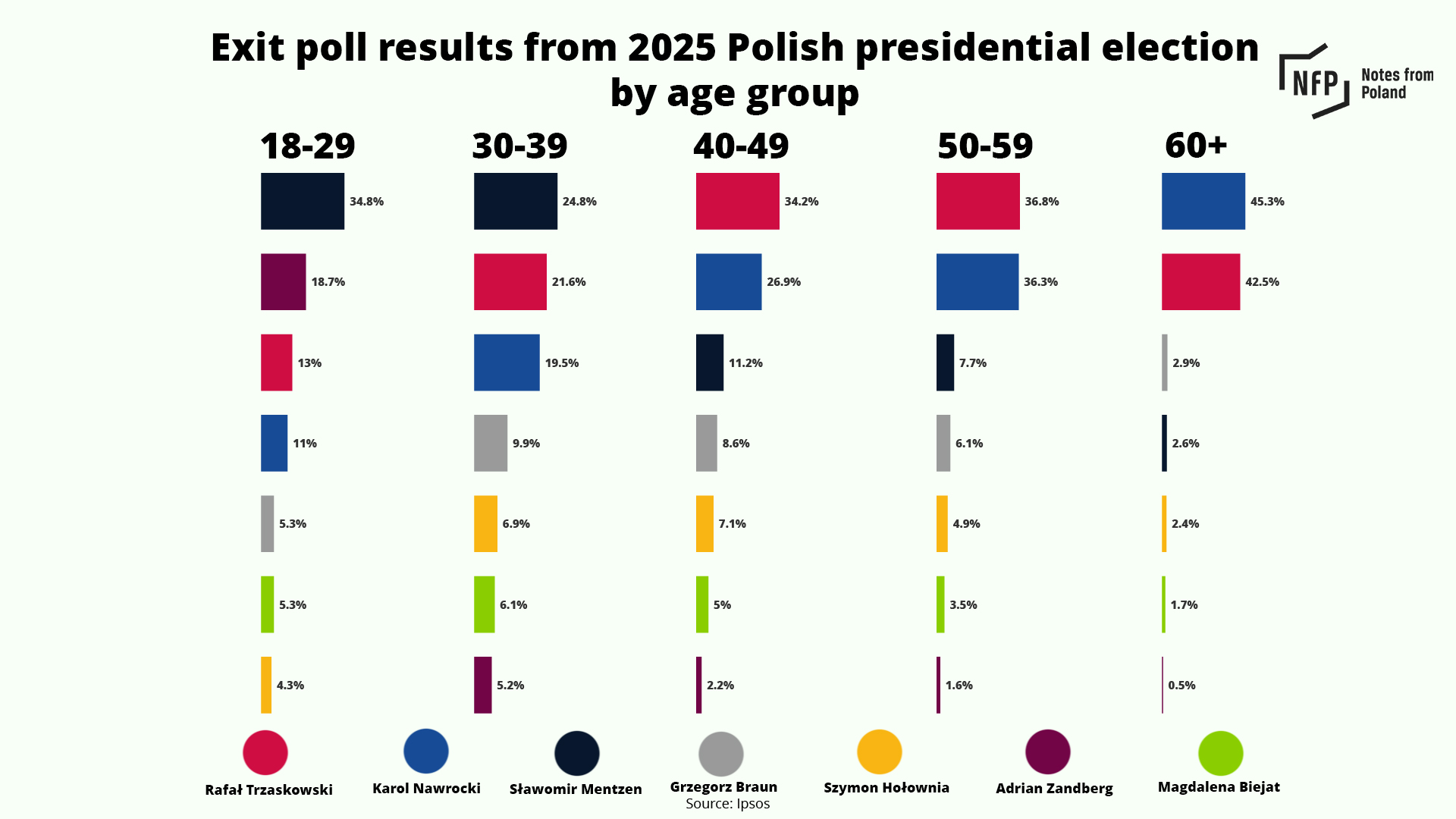
Meanwhile, a gender divide was also visible, with women favoring Trzaskowski and left-wing candidates, while men favored conservatives. Far-right candidates received a combined 28.4% of the male vote.
Below, we also present the breakdown of exit poll results by voters' level of education and the size of the municipality in which they live.
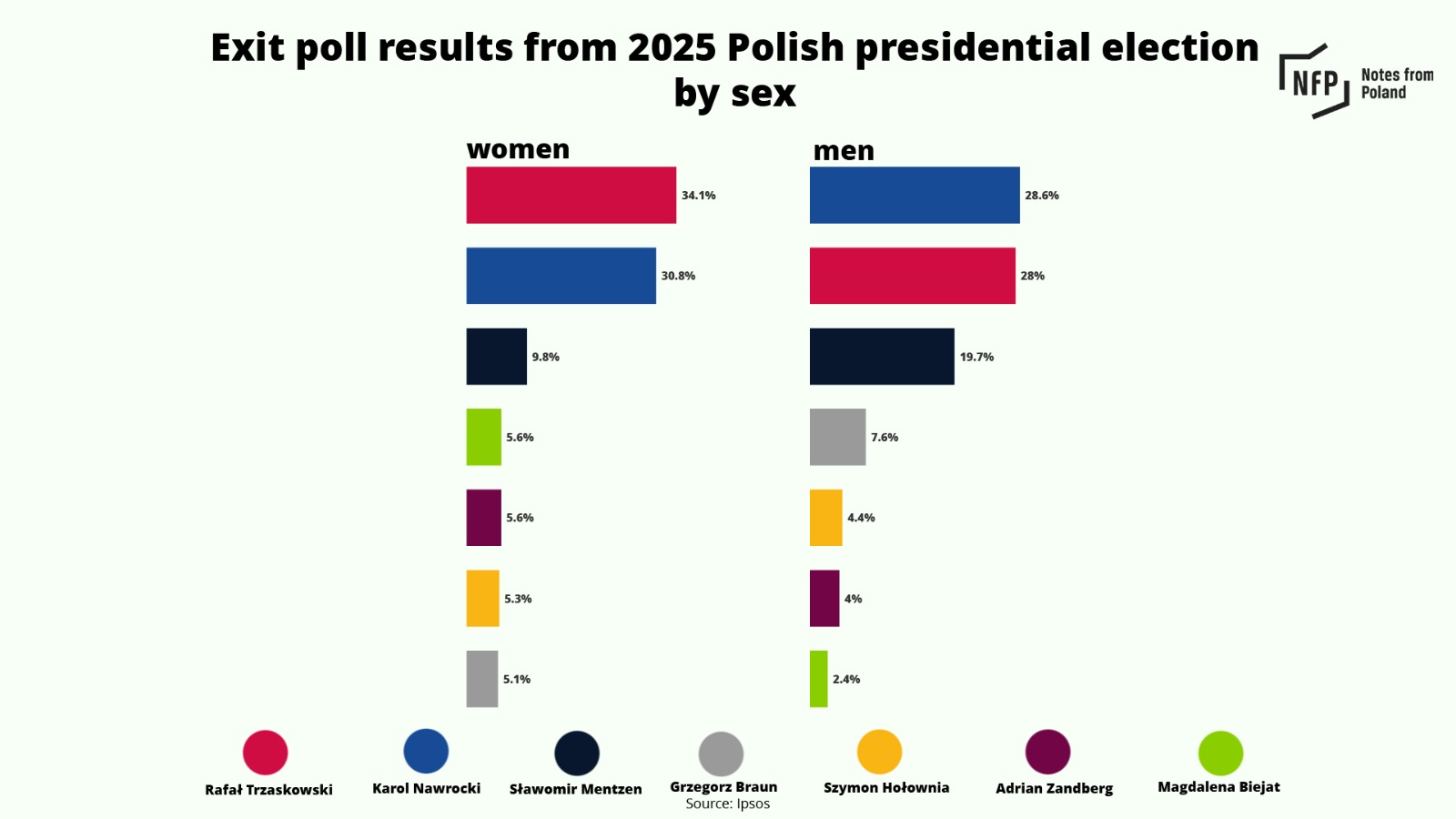


Meanwhile, official results show that, as is regularly the case with Polish elections, the more conservative east of Poland favored Nawrocki while the more liberal west voted for Trzaskowski.
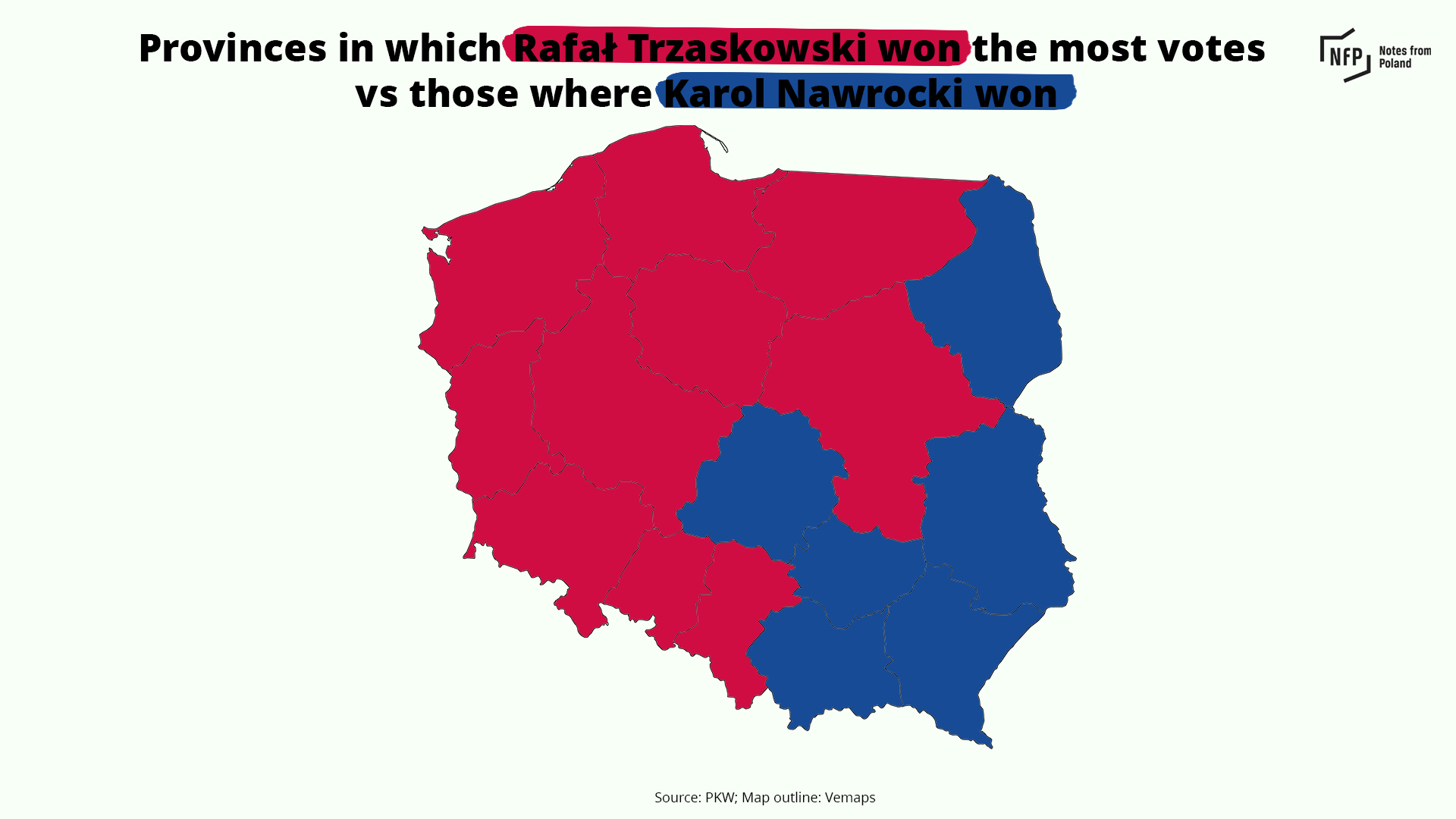
The official results also show that Trzaskowski won convincingly among Polish citizens voting outside Poland itself, although Nawrocki was more popular among the large diaspora in the United States, which usually leans more conservative than Poles in western European countries such as the United Kingdom and Germany.
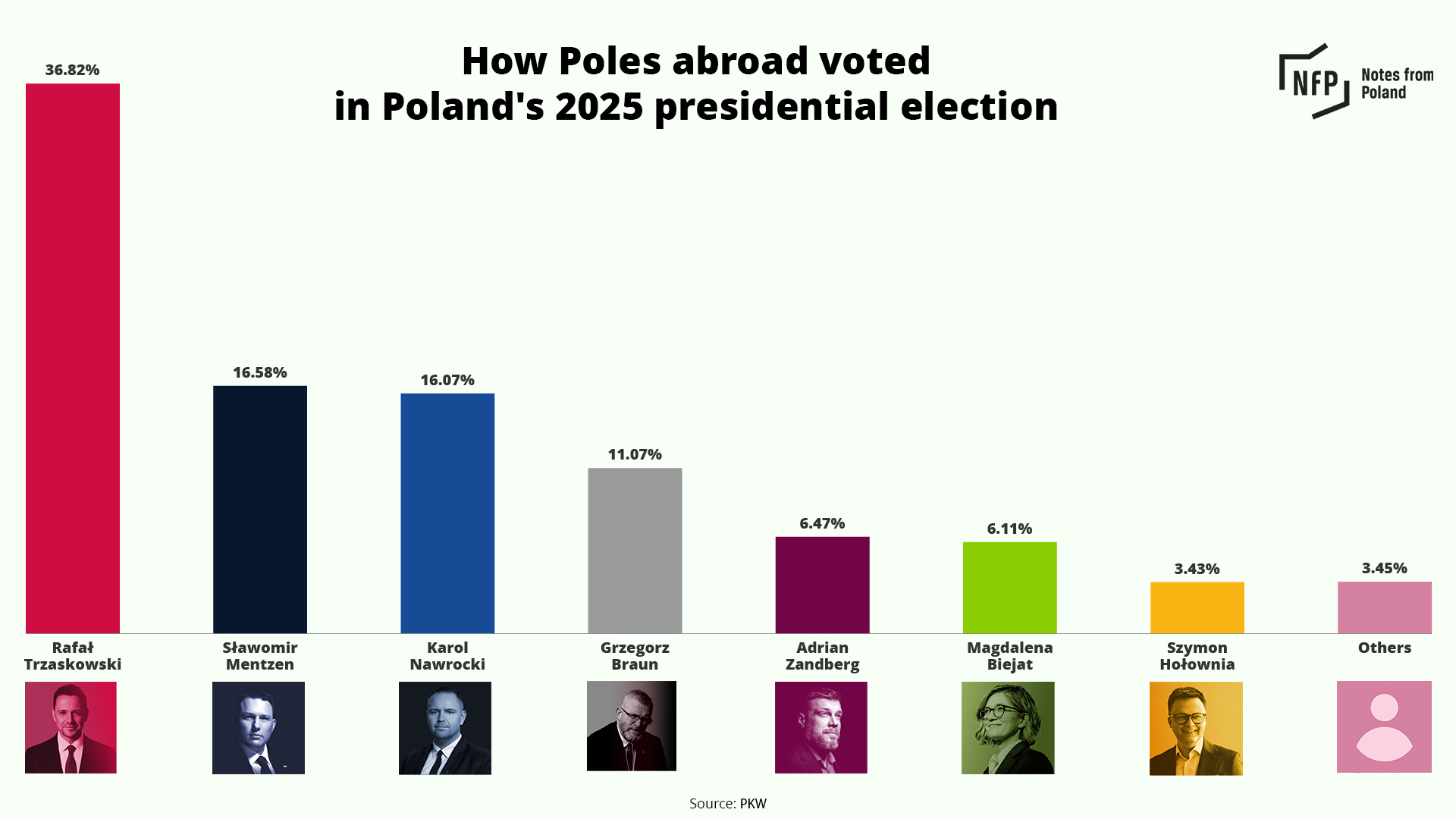
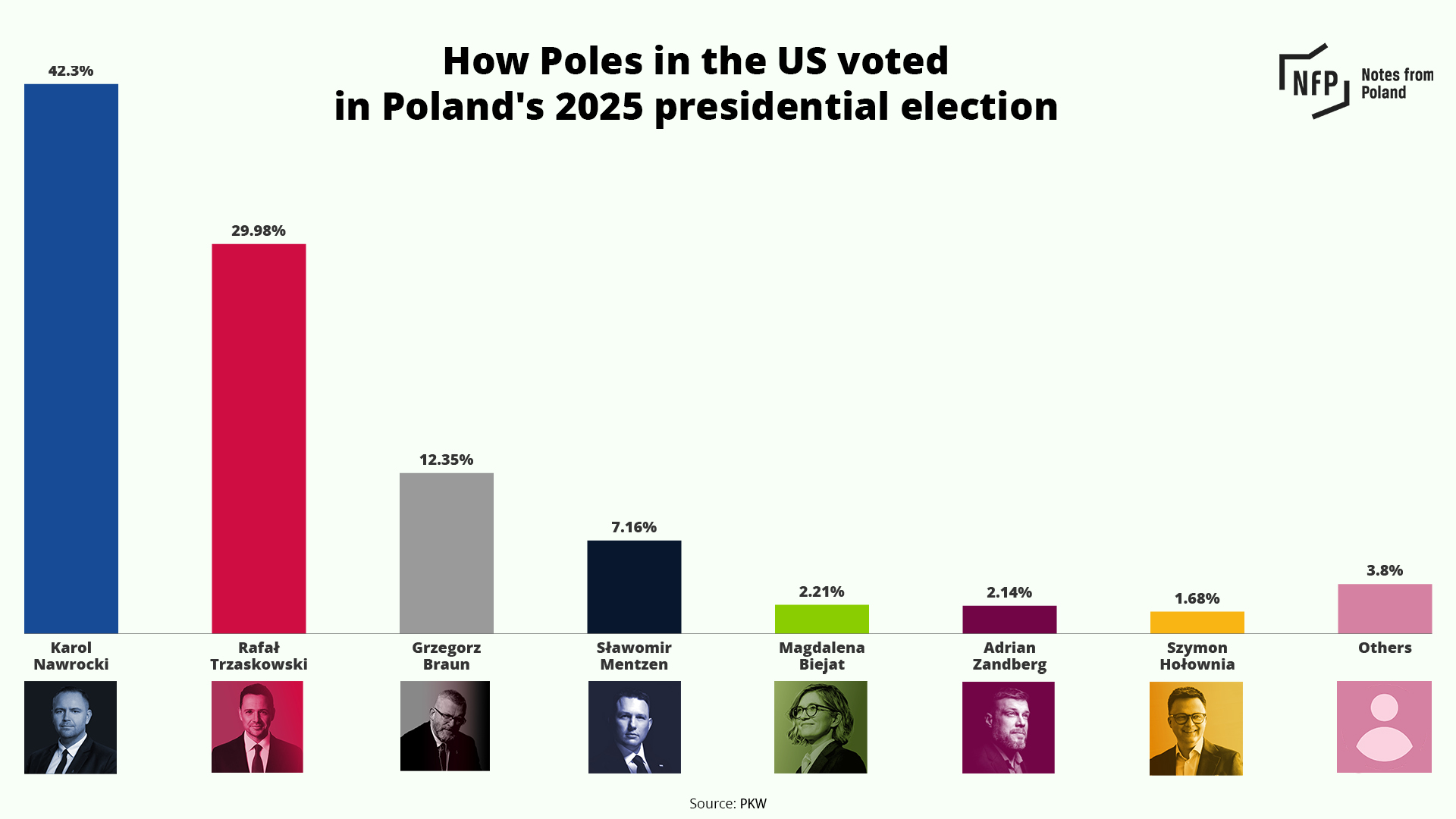
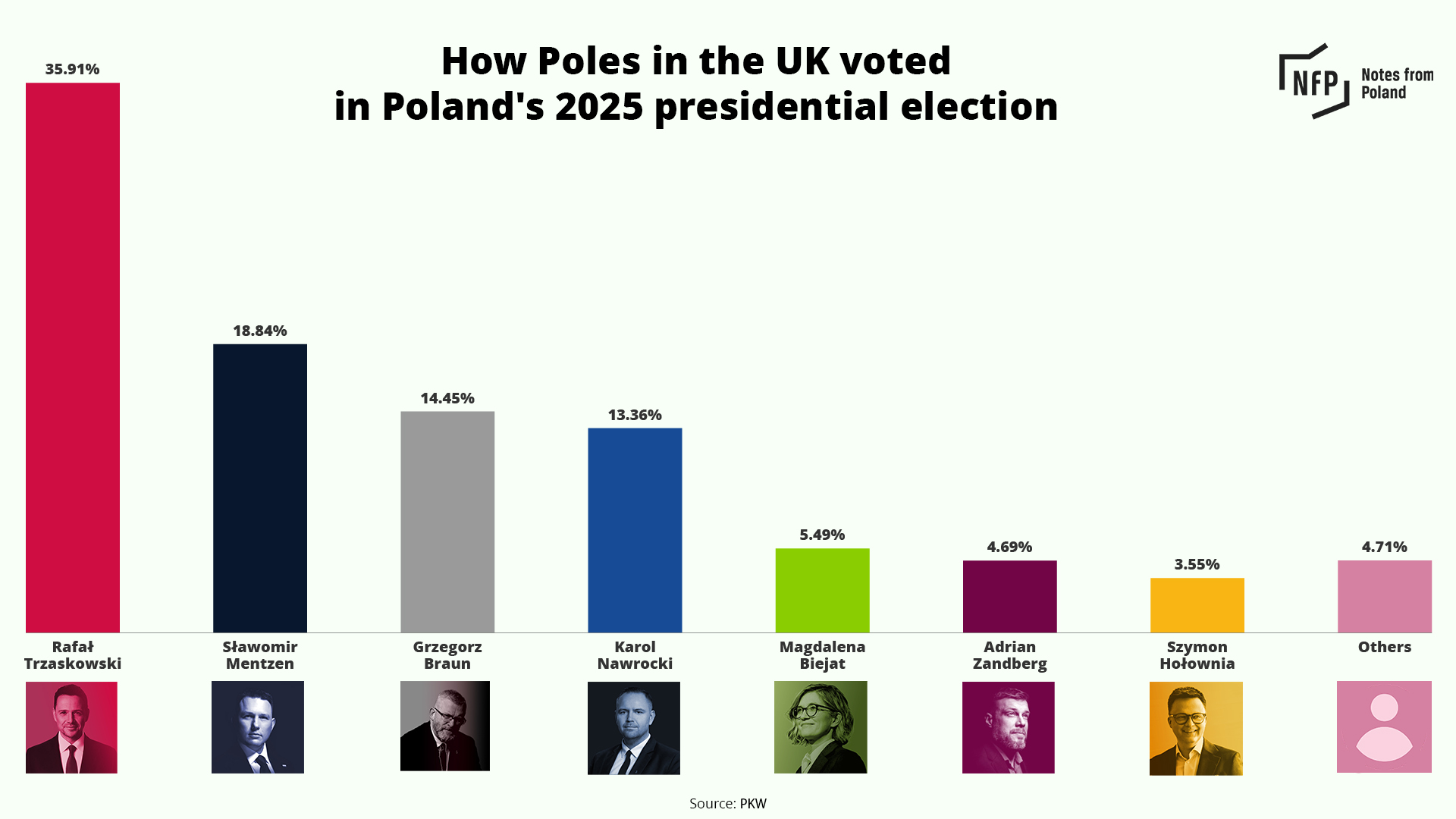
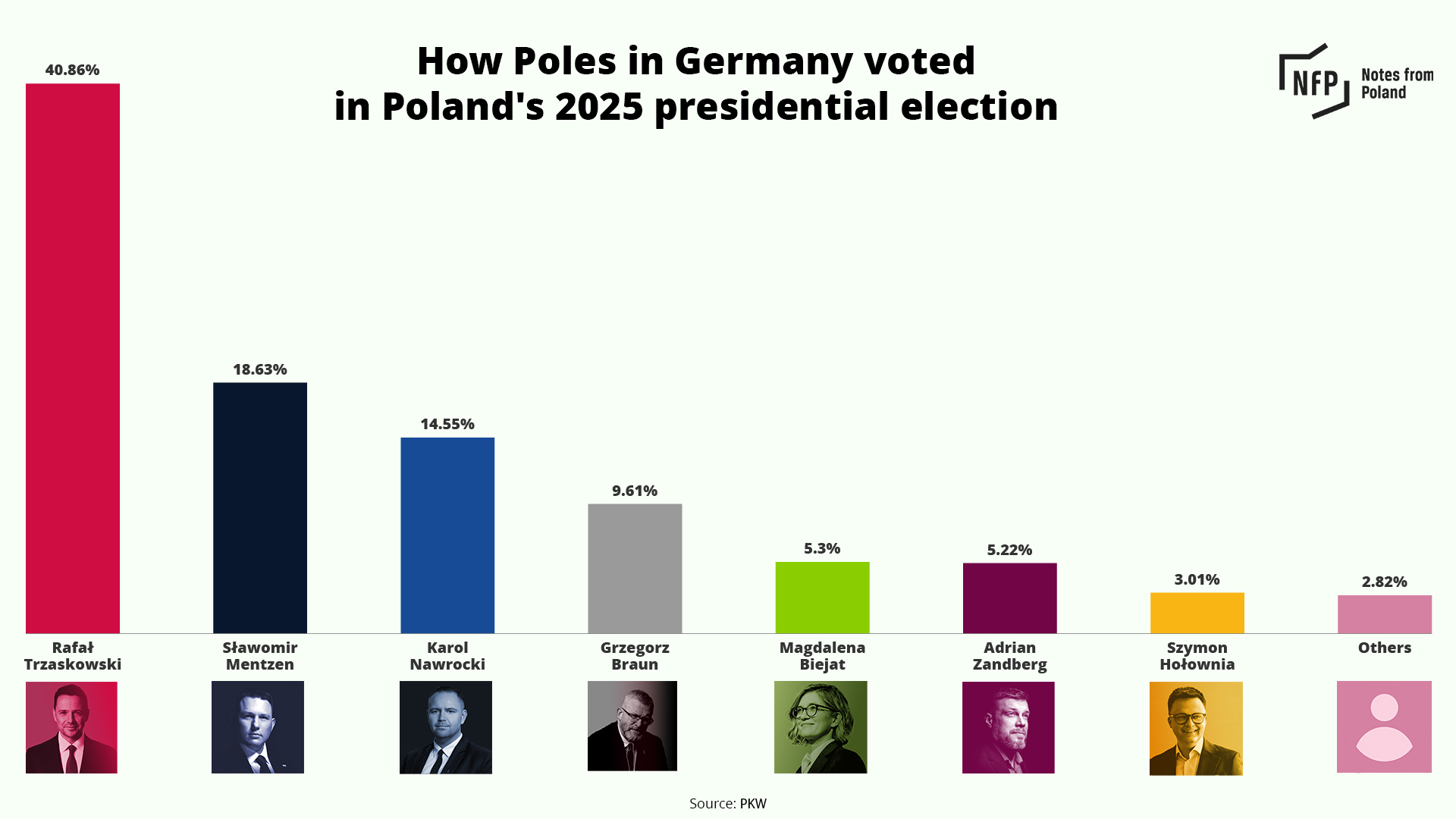
Trzaskowski and Nawrocki will now meet in a one-on-one run-off on 1 June, ahead of which both candidates will vie for support from the electorates of their eliminated rivals.
Trzaskowski has already extended an olive branch to left-wing contenders Zandberg and Magdalena Biejat of The Left (Lewica), who together garnered around 9% of the vote.
In a speech following the release of exit poll results, he pledged to address issues important to progressive voters, including abortion , calling the current near-total ban on terminating pregnancies “medieval”. This marked a shift from his campaign's earlier emphasis on more conservative themes such as migration and national security.
Nawrocki, meanwhile, made an appeal to Mentzen, who placed third with 14.9% – his party's strongest-ever performance in a national election. “This is not the time to discuss political and partisan issues. This is the time to save Poland,” Nawrocki said on Sunday night, addressing Mentzen directly.
Our editor-in-chief @danieltilles1 offers five conclusions from yesterday's presidential election first round in Poland – and looks ahead to what it may mean for the decisive second-round run-off in two weeks' time https://t.co/Vzh67U0iV9
— Notes from Poland 🇵🇱 (@notesfrompoland) May 19, 2025
Main image credit: Tomasz Stanczak / Agencja Wyborcza.pl
notesfrompoland



![The (proper) renovation of Glazera Street in Przemyśl has started [PHOTOS]](/_next/image?url=https%3A%2F%2Fzycie.pl%2Fstatic%2Ffiles%2Fgallery%2F561%2F1603695_1747754179.webp&w=3840&q=100)

